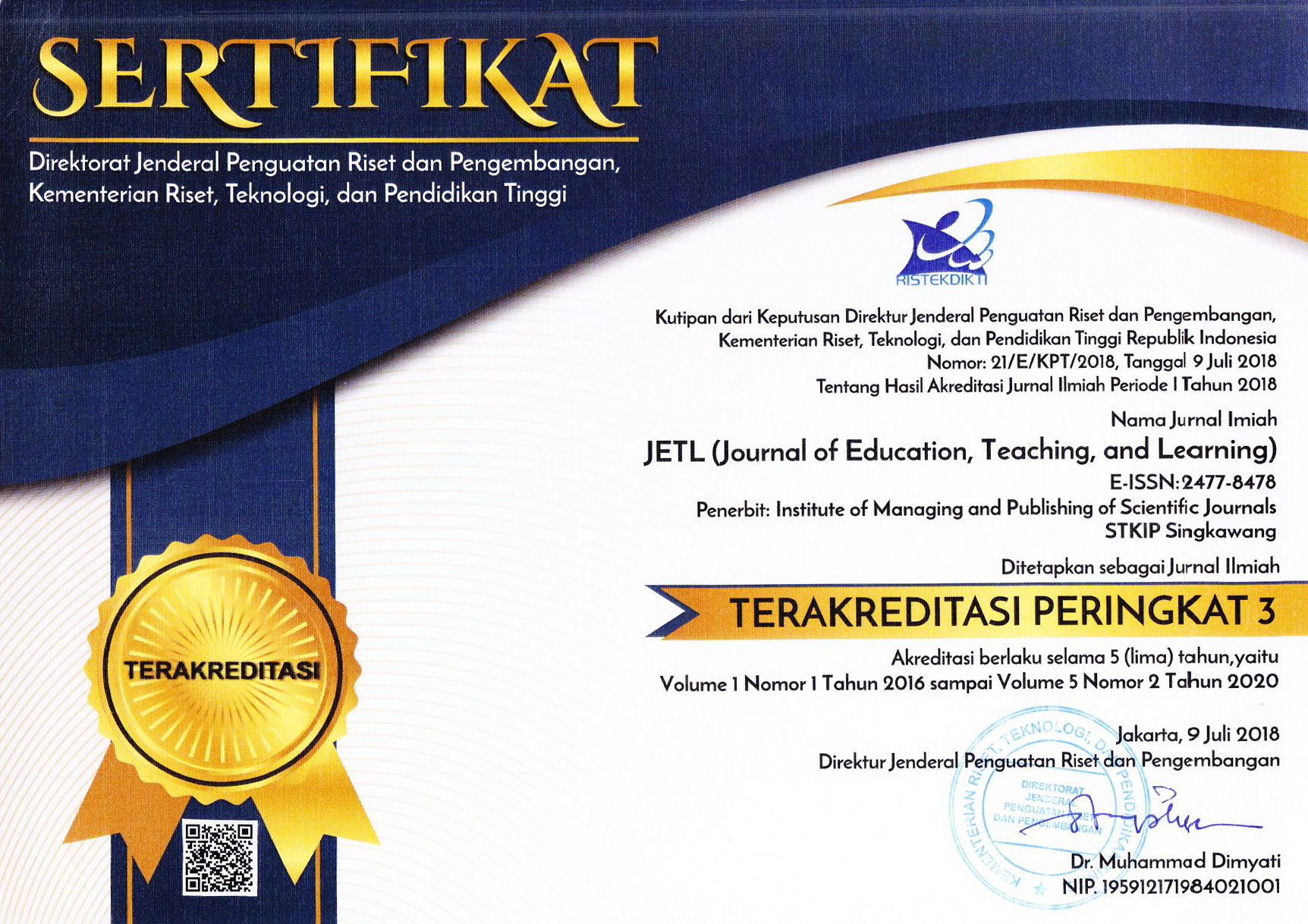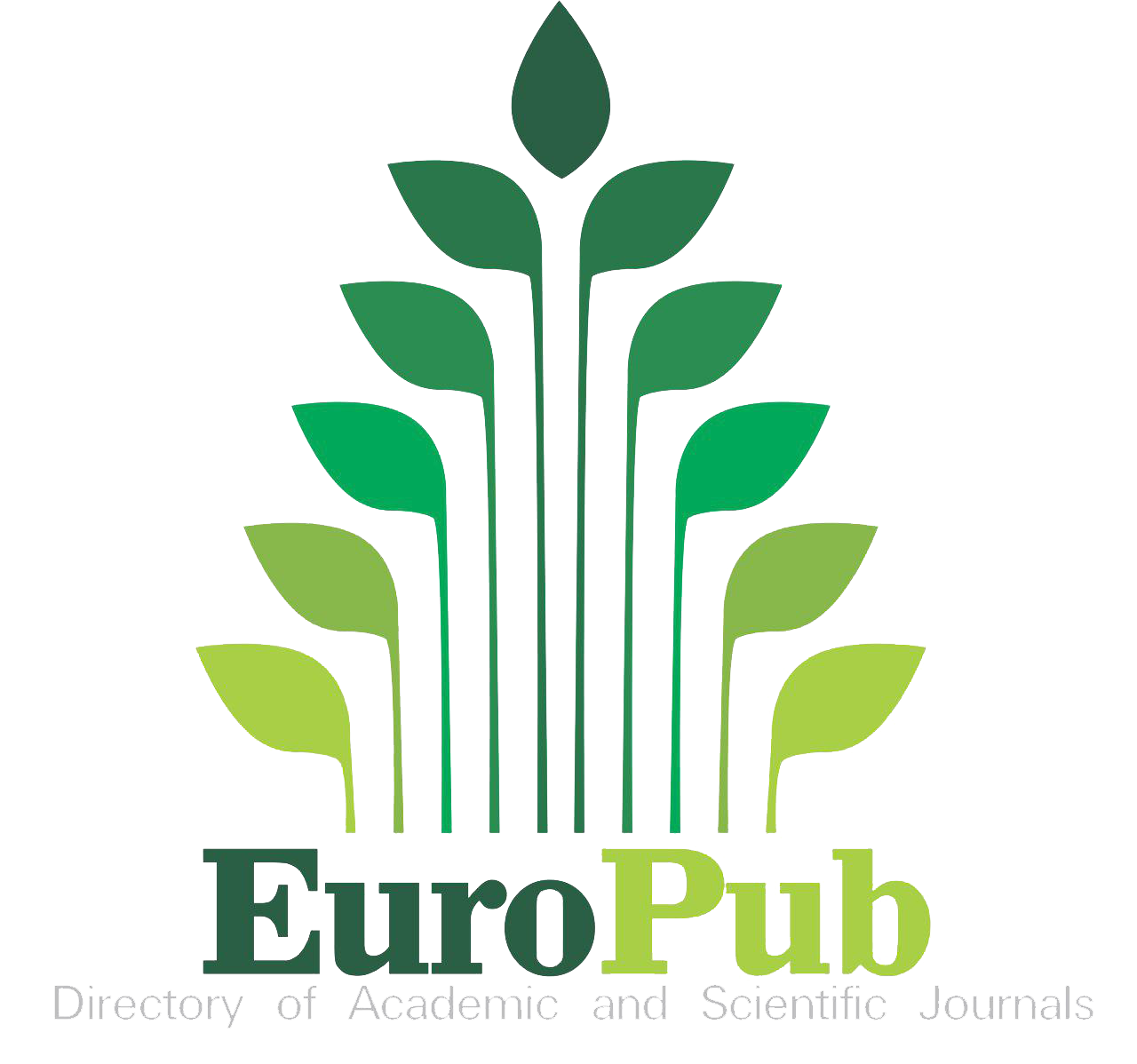Sport Monopoly Games: A Physical Education Learning For Physical Fitness Student
Abstract
Keywords
Full Text:
PDFReferences
Ahdan, S., Gumantan, A., & Sucipto, A. (2021). Program Latihan Kebugaran Jasmani dalam Menjaga Kesehatan. Journal of Technology and Social for Community Service (JTSCS), 2(2), 102–107. https://doi.org/https://doi.org/10.33365/jsstcs.v2i2.1363
Amenya, P. C. A., Annan, R. A., Apprey, C., & Kpewou, D. E. (2021). Physical fitness and cognitive function among school–aged children in selected basic schools in the Ho Municipality of Ghana. Heliyon, 7(3), e06324. https://doi.org/10.1016/j.heliyon.2021.e06324
Andres, A. S. (2017). Physical education of students, considering their physical fitness level. Physical Education of Students, 21(3), 103. https://doi.org/10.15561/20755279.2017.0301
Aune, D., Norat, T., Leitzmann, M., Tonstad, S., & Vatten, L. J. (2015). Physical activity and the risk of type 2 diabetes: A systematic review and dose-response meta-analysis. European Journal of Epidemiology, 30(7), 529–542. https://doi.org/10.1007/s10654-015-0056-z
Bompa, T. O., & Buzzichelli, C. A. (2019). Periodization: Theory and Methodology of Training (Sixth Edit). Human Kinetics.
Box, A. G., Feito, Y., Brown, C., & Petruzzello, S. J. (2019). Individual differences influence exercise behavior: how personality, motivation, and behavioral regulation vary among exercise mode preferences. Heliyon, 5(4), e01459. https://doi.org/10.1016/j.heliyon.2019.e01459
Brusseau, T. A., Hannon, J. C., Fu, Y., Fang, Y., Nam, K., Goodrum, S., & Burns, R. D. (2018). Trends in physical activity, health-related fitness, and gross motor skills in children during a two-year comprehensive school physical activity program. Journal of Science and Medicine in Sport, 21(8), 828–832. https://doi.org/10.1016/j.jsams.2017.12.015
Chen, W., & Chang, M. H. (2010). New growth charts for taiwanese children and adolescents based on world health organization standards and health-related physical fitness. Pediatrics and Neonatology, 51(2), 69–79. https://doi.org/10.1016/S1875-9572(10)60014-9
Corrêa, R. E., Velho, P. E. N. F., do Prado Calazans, R., Camargo, C., & Tolocka, R. E. (2022). Physical activity and emotions in a period of social distancing due to the COVID-19 pandemic. Sports Medicine and Health Science, 4(3), 172–176. https://doi.org/10.1016/j.smhs.2022.04.004
da Silveira, M. P., da Silva Fagundes, K. K., Bizuti, M. R., Starck, É., Rossi, R. C., & de Resende e Silva, D. T. (2021). Physical exercise as a tool to help the immune system against COVID-19: an integrative review of the current literature. Clinical and Experimental Medicine, 21(1), 15–28. https://doi.org/10.1007/s10238-020-00650-3
Daugherty, A. M., Zwilling, C., Paul, E. J., Sherepa, N., Allen, C., Kramer, A. F., Hillman, C. H., Cohen, N. J., & Barbey, A. K. (2018). Multi-modal fitness and cognitive training to enhance fluid intelligence. Intelligence, 66, 32–43. https://doi.org/https://doi.org/10.1016/j.intell.2017.11.001
de Bruijn, A. G. M., Hartman, E., Kostons, D., Visscher, C., & Bosker, R. J. (2018). Exploring the relations among physical fitness, executive functioning, and low academic achievement. Journal of Experimental Child Psychology, 167, 204–221. https://doi.org/10.1016/j.jecp.2017.10.010
Doherty, R., Madigan, S. M., Nevill, A., Warrington, G., & Ellis, J. G. (2021). The sleep and recovery practices of athletes. Nutrients, 13(4), 1–25. https://doi.org/10.3390/nu13041330
Foster, C., & Armstrong, M. E. G. (2018). What types of physical activities are effective in developing muscle and bone strength and balance? Journal of Frailty, Sarcopenia and Falls, 03(02), 58–65. https://doi.org/10.22540/jfsf-03-058
Franklin, B. A., Eijsvogels, T. M. H., Pandey, A., Quindry, J., & Toth, P. P. (2022). Physical activity, cardiorespiratory fitness, and cardiovascular health: A clinical practice statement of the American Society for Preventive Cardiology Part II: Physical activity, cardiorespiratory fitness, minimum and goal intensities for exercise train. American Journal of Preventive Cardiology, 12(October), 100425. https://doi.org/10.1016/j.ajpc.2022.100425
Giriwijoyo, H. Y. S. S. (2016). Kesehatan, Olahraga dan Kinerja. CV. Bintang WarliArtika.
Gu, X., Chang, M., & Solmon, M. A. (2016). Physical Activity , Physical Fitness , and Health-Related Quality of Life in School-Aged Children. Journal of Teaching in Physical Education, 35, 117–126. https://doi.org/http://dx.doi.org/10.1123/jtpe.2015-0110 ©
Hambali, S. (2018). Pendekatan Bermain dalam Pembelajaran Passing Atas pada Permainan Bolavoli. Journal of Teaching Physical Education in Elementary School, 2(1), 46–52. http://ejournal.upi.edu/index.php/tegar/index
Hambali, S., Akbaruddin, A., Bustomi, D., Rifai, A., Iskandar, T., Ridlo, A. F., Meirizal, Y., Rusmana, R., & Tyas, R. A. (2021). The effectiveness learning of physical education on pandemic covid-19. International Journal of Human Movement and Sports Sciences, 9(2), 219–223. https://doi.org/10.13189/saj.2021.090208
Henning, L., Dreiskämper, D., & Tietjens, M. (2022). The interplay of actual and perceived physical fitness in children: Effects on motivation and physical activity. Psychology of Sport and Exercise, 58, 102055. https://doi.org/10.1016/j.psychsport.2021.102055
Huizenga, J. C., ten Dam, G. T. M., Voogt, J. M., & Admiraal, W. F. (2017). Teacher perceptions of the value of game-based learning in secondary education. Computers & Education, 110, 105–115. https://doi.org/https://doi.org/10.1016/j.compedu.2017.03.008
Irmansyah, J., Susanto, E., Lumintuarso, R., Sugiyanto, F. X., Syarif, A., & Hermansyah. (2021). Physical literacy in the culture of physical education in elementary schools: Indonesian perspectives. International Journal of Human Movement and Sports Sciences, 9(5), 929–939. https://doi.org/10.13189/saj.2021.090514
Johnson, J. E., Sevimli-Celik, S., Al-Mansour, M. A., Tunçdemir, T. B. A., & Dong, P. I. (2019). Play in early childhood education. In Handbook of research on the education of young children (pp. 165–175). Routledge.
Kira, I. A., Templin, T., Lewandowski, L., Ramaswamy, V., Ozkan, B., & Mohanesh, J. (2008). The physical and mental health effects of Iraq war media exposure on Iraqi refugees. Journal of Muslim Mental Health, 3(2), 193–215. https://doi.org/10.1080/15564900802487592
Klein, E., & Hollingshead, A. (2015). Collaboration Between Special and Physical Education. TEACHING Exceptional Children, 47(3), 163–171. https://doi.org/10.1177/0040059914558945
Lavie, C. J., Ozemek, C., Carbone, S., Katzmarzyk, P. T., & Blair, S. N. (2019). Sedentary Behavior, Exercise, and Cardiovascular Health. Circulation Research, 124(5), 799–815. https://doi.org/10.1161/CIRCRESAHA.118.312669
Levine, G. N., Cohen, B. E., Commodore-Mensah, Y., Fleury, J., Huffman, J. C., Khalid, U., Labarthe, D. R., Lavretsky, H., Michos, E. D., Spatz, E. S., Kubzansky, L. D., Boehm, J. K., Carney, R. M., & Smith, S. C. (2021). Psychological Health, Well-Being, and the Mind-Heart-Body Connection A Scientific Statement From the American Heart Association. Circulation, 143(10), E763–E783. https://doi.org/10.1161/CIR.0000000000000947
Lundvall, S. (2015). Physical literacy in the field of physical education - A challenge and a possibility. Journal of Sport and Health Science, 4(2), 113–118. https://doi.org/10.1016/j.jshs.2015.02.001
Malm, C., Jakobsson, J., & Isaksson, A. (2019). Physical Activity and Sports — Real Health Benefits : A Review with Insight into the Public Health of Sweden. Journal Sport, 127(7), 1–28. https://doi.org/https://doi.org/10.3390/sports7050127
Matei, D., Trofin, D., Iordan, D. A., Onu, I., Condurache, I., Ionite, C., & Buculei, I. (2023). The Endocannabinoid System and Physical Exercise. International Journal of Molecular Sciences, 24(3), 1–23. https://doi.org/10.3390/ijms24031989
Maugeri, G., Castrogiovanni, P., Battaglia, G., Pippi, R., D’Agata, V., Palma, A., Di Rosa, M., & Musumeci, G. (2020). The impact of physical activity on psychological health during Covid-19 pandemic in Italy. Heliyon, 6(6), e04315. https://doi.org/10.1016/j.heliyon.2020.e04315
Medina-Mirapeix, F., Lillo-Navarro, C., Montilla-Herrador, J., Gacto-Sánchez, M., Franco-Sierra, M. A., & Escolar-Reina, P. (2017). Predictors of parents’ adherence to home exercise programs for children with developmental disabilities, regarding both exercise frequency and duration: A survey design. European Journal of Physical and Rehabilitation Medicine, 53(4), 545–555. https://doi.org/10.23736/S1973-9087.17.04464-1
Mikkelsen, K., Stojanovska, L., Polenakovic, M., Bosevski, M., & Apostolopoulos, V. (2017). Exercise and mental health. Maturitas, 106(September), 48–56. https://doi.org/10.1016/j.maturitas.2017.09.003
Mohammadi-Nia, M., Yaali, R., Amani-Shalamzari, S., & Clark, C. C. T. (2023). The effect of 8 weeks of child designed vs teacher designed games on physical fitness and creativity in children 8–10 years. Physiology & Behavior, 259, 114030. https://doi.org/https://doi.org/10.1016/j.physbeh.2022.114030
Mücke, M., Ludyga, S., Colledge, F., & Gerber, M. (2018). Influence of Regular Physical Activity and Fitness on Stress Reactivity as Measured with the Trier Social Stress Test Protocol: A Systematic Review. Sports Medicine, 48(11), 2607–2622. https://doi.org/10.1007/s40279-018-0979-0
Ovsyannikova, I. N., Tomilin, K. G., Tumasyan, Y. A., Vasilkovskaya, Y. A., & Malygina, L. V. (2021). Game method to increase students’ motivation to engage in elective disciplines in physical culture and sports. Physical Education of Students, 25(3), 197–204. https://doi.org/10.15561/20755279.2021.0308
Ozemek, C., Laddu, D. R., Lavie, C. J., Claeys, H., Kaminsky, L. A., Ross, R., Wisloff, U., Arena, R., & Blair, S. N. (2018). An Update on the Role of Cardiorespiratory Fitness, Structured Exercise and Lifestyle Physical Activity in Preventing Cardiovascular Disease and Health Risk. Progress in Cardiovascular Diseases, 61(5–6), 484–490. https://doi.org/10.1016/j.pcad.2018.11.005
Patel, M. S., Benjamin, E. J., Volpp, K. G., Fox, C. S., Small, D. S., Massaro, J. M., Lee, J. J., Hilbert, V., Valentino, M., Taylor, D. H., Manders, E. S., Mutalik, K., Zhu, J., Wang, W., & Murabito, J. M. (2017). Effect of a game-based intervention designed to enhance social incentives to increase physical activity among families: The BE FIT randomized clinical trial. JAMA Internal Medicine, 177(11), 1586–1593. https://doi.org/10.1001/jamainternmed.2017.3458
Pinto, J. B. de C., Cruz, J. P. S., Pinho, T. M. P. de, & Marques, A. S. P. de D. (2020). Health-related physical fitness of children and adolescents in Portugal. Children and Youth Services Review, 117(March). https://doi.org/10.1016/j.childyouth.2020.105279
Purba, J., Widowati, A., & Daya, W. J. (2020). Peningkatan Kebugaran Jasmani Melalui Variasi Latihan Sirkuit dan Olahraga Aerobik. Jurnal Ilmu Keolahragaan, 3(1), 10–16. https://doi.org/http://dx.doi.org/10.26418/jilo.v3i1.40658
Qu, J., Shi, H., Chen, X., Li, K., Liang, H., & Cui, Y. (2020). Evaluation of Physical Fitness in Children With Congenital Heart Diseases Versus Healthy Population. Seminars in Thoracic and Cardiovascular Surgery, 32(4), 906–915. https://doi.org/10.1053/j.semtcvs.2020.05.014
Radak, Z., Torma, F., Berkes, I., Goto, S., Mimura, T., Posa, A., Balogh, L., Boldogh, I., Suzuki, K., Higuchi, M., & Koltai, E. (2019). Exercise effects on physiological function during aging. Free Radical Biology and Medicine, 132, 33–41. https://doi.org/10.1016/j.freeradbiomed.2018.10.444
Saeed, S. A., Cunningham, K., & Bloch, R. M. (2019). Depression and anxiety disorders: Benefits of exercise, yoga, and meditation. American Family Physician, 99(10), 620–627. https://doi.org/https://www.aafp.org/pubs/afp/issues/2019/0515/p620.html
Suhardi, Widodo, D. C., Hariyani, U., & Kemala, A. (2021). Panduan Tes Kebugaran Siswa Indonesia (TKSI) Fase C SD (Kelas 5 & 6). KEMENTERIAN PENDIDIKAN, KEBUDAYAAN, RISET DAN TEKNOLOGI (PPPPTK PENJAS DAN BK).
Tanzila, R. A. (2018). Pengaruh Latihan Aerobik Terhadap Kebugaran Kardiorespirasi Pada Siswa Smp Di Palembang. PROCEEDING UMSURABAYA, 14–22. http://103.114.35.30/index.php/Pro/article/view/1507/1210
Thompson, W. R. (2023). Worldwide Survey of Fitness Trends for 2023. ACSM’s Health and Fitness Journal, 27(1), 9–18. https://doi.org/10.1249/FIT.0000000000000834
Thyfault, J. P., & Bergouignan, A. (2020). Exercise and metabolic health: beyond skeletal muscle. Diabetologia, 63(8), 1464–1474. https://doi.org/10.1007/s00125-020-05177-6
van der Scheer, J. W., Ginis, K. A. M., Ditor, D. S., Goosey-Tolfrey, V. L., Hicks, A. L., West, C. R., & Wolfe, D. L. (2017). Effects of exercise on fitness and health of adults with spinal cord injury: a systematic review. Neurology, 89(7), 736–745. https://doi.org/https://doi.org/10.1212/WNL.0000000000004224
Yorks, D. M., Frothingham, C. A., & Schuenke, M. D. (2017). Effects of group fitness classes on stress and quality of life of medical students. Journal of the American Osteopathic Association, 117(11), e17–e25. https://doi.org/10.7556/jaoa.2017.140
DOI: http://dx.doi.org/10.26737/jetl.v9i1.5826
Refbacks
- There are currently no refbacks.

This work is licensed under a Creative Commons Attribution-NonCommercial 4.0 International License.
Published by:
Institute of Managing and Publishing of Scientific Journals STKIP Singkawang
Sekolah Tinggi Keguruan dan Ilmu Pendidikan (STKIP) Singkawang
Address : STKIP Singkawang, Jalan STKIP - Kelurahan Naram Singkawang, Kalimantan Barat, INDONESIA, 79251
No. Telp. : +62562 420 0344
No. Fax. : +62562 420 0584
JETL (Journal of Education, Teaching, and Learning)
e-ISSN : 2477-8478
p-ISSN : 2477-5924

Editor in Chief Contact: [email protected] / Wa: +6282142072788
Publisher Contact: [email protected] / Wa: +6282142072788
Management Tools
JETL Indexed by:
JETL (Journal of Education, Teaching, and Learning) is licensed under a Creative Commons Attribution-NonCommercial 4.0 International License.











